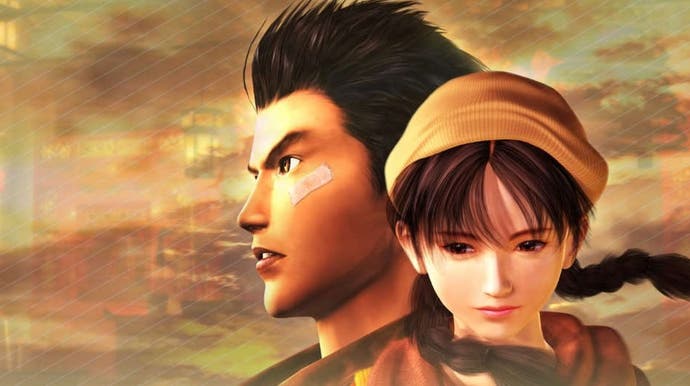Shenmue's HD remasters analysed: enhancements are sparse but the ports are solid gold
Genuine console classics properly restored for modern hardware.
It may not be the full-on remaster/remake we might have hoped for, but Shenmue and its sequel are finally playable on modern hardware, courtesy of Sega and developer d3t. PlayStation 4, Xbox One and PC releases are available, each delivering a remarkably close conversion of the Dreamcast originals, with one or two interesting tweaks.
Let's begin with the first game. It should come as no surprise that Shenmue HD delivers a higher resolution experience. Across all Xbox and PlayStation consoles, Shenmue HD operates with a 1080p pixel-count - whether you're gaming on base or enhanced hardware. The good news is that image quality is terrific. Shenmue uses a form of anti-aliasing that manages to clean up edges to the point where it's nearly impossible to see individual pixel steps. It's an extremely effective solution and it holds up well even when scaled on a 4K TV.
More importantly, in comparison to Dreamcast, shimmering is kept to an absolute minimum with thin objects and fine details appearing temporally stable in the HD version. In its original format, Shenmue exhibits a lot of noticeable shimmering and aliasing - something atypical for the Dreamcast. That's because Shenmue is one of the few games on the system to completely eschew mip-maps - something it shares with AM2's arcade games. My guess is that AM2 felt that the side effects of utilising bilinear filtering in combination with mip-maps - which leads to blurred textures at oblique angles - took too great a toll on the perception of fine detail. Thankfully, the new HD version handles this much more effectively, enabling clean surfaces devoid of shimmering and artefacts.
Beyond that, the HD version also avoids the dithering artefacts inherent in the Dreamcast version. Internally, many Dreamcast games utilise a higher colour depth but render out to a 16-bit front buffer to save memory, resulting in stippled dithering when played using VGA. There are no such issues with the new HD version, which retains full colour depth from start to finish, cleaning up the image signification.
Beyond resolution, players now have the option of viewing the game in full 16:9 widescreen or its original 4:3 aspect ratio, while also toggling low resolution rendering if you want to experience the 'sensation' of 480p. There's one caveat to this, however - the cinematic cut-scenes are still displayed at 4:3 regardless of your selected setting. I'd imagine the selected camera angles simply introduced issues when displayed at a wider aspect ratio and the decision was made to stick with the original presentation. The rest of the experience remains at 16:9, however, including normal dialogue sequences and QTEs.
Looking further, all of the original models, textures and audio exist as they did on Dreamcast. While the assets may be the same, their usage is improved in certain areas. Take the sky, instance. On Dreamcast, the sky texture is point-sampled and pixelated which is an odd choice considering that clouds should appear soft by their nature. The HD version solves this by filtering the cloud texture. The HD remaster also adds a bloom effect (which can be disabled for purists) - it subtly boosts image vibrance and the luminosity of certain elements, such as neon signs at night-time. Regardless of which setting you opt for, there is a noticeable difference in general colour and tone compared to the Dreamcast original, with the HD version delivering a slightly warmer appearance in general.
So what else has changed? Well, loading times are much faster in the HD version and this is perhaps one of the most significant changes. Moving between shops and different areas is now almost seamless as a result of the speed increase. Frame-rate is improved too: while the Dreamcast game is steady in most scenes, busier streets tend to drop frames, and actually cause actual slow-down as the engine is tied to the 30fps update. As you'd expect, the HD re-release of Shenmue doesn't exhibit these problems - at least based on my experience so far.
Of course, no matter where you play, it's still just 30 frames per second. This is a point of contention that appears often when discussing ports from older systems. In this case, the issue is once again likely tied to the way the game was designed. It may simply not be possible to run at higher frame-rates without breaking the game. And yes, this also applies to the PC version of the game. This presents issues on screens where 30Hz can't be evenly divided into the display's native refresh. My screen runs at 75Hz, for example, so right now, it's impossible to play without judder. Borderless window mode is fine then but now you have frame-pacing issues. Hopefully this will be fixed soon.
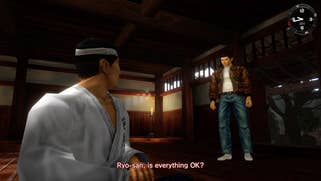
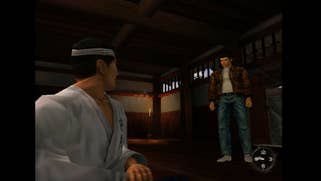
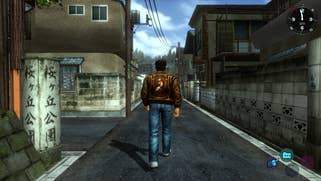
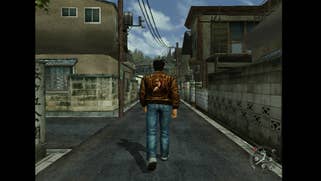

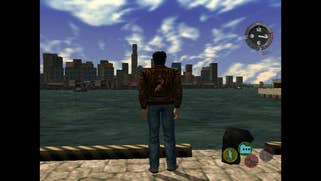


The PC release of Shenmue shares a lot with the console versions but with a few additional options tucked away in the options menu. This version supports higher native resolutions and super-sampling along with resolution scaling, optional FXAA and more. In its current state, there is some support for ultra-wide monitors. The 3D portion of the game seems to display fine and the wider field of view further opens up the presentation. Unfortunately, the interface and letterboxing aren't working quite right in the version I tested, but I've been told that these will be corrected by launch so, hopefully, it won't be a problem. Of course, in standard 16:9, it presents just like the console versions.
The last thing I want to touch on here is the audio - the original Dreamcast version doesn't sound great while playing digital audio samples and that's true here as well. Voices are heavily compressed, and playback is poor in all versions of Shenmue. Unfortunately, there is likely no way to have improved this situation without re-doing everything but it's worth noting. One nice improvement, though, is the option to select either Japanese or English voice acting - a feature not previously available due to disc space limitations. This is actually good news, as the Japanese audio quality is on another level - it sounds a lot better, and you can always run the English subtitles in tandem.
All in all, while there are a few limitations and issues to be aware of, this is now the definitive way to enjoy Shenmue 1. The port is solid - but what about Shenmue 2? Well, this is where things start to get interesting as two versions exist, the Dreamcast original and its tweaked Xbox port. On a basic level, we're still looking at a basic 1080p30 presentation, but I found that Shenmue 2 benefits significantly more from the higher resolution than the original game. Areas in the sequel tend to be larger but also feature a greater assortment of flat planes and building facades. As a result, on Dreamcast, image quality is poor with severe shimmering visible in nearly every scene.
By combining effective anti-aliasing with a higher rendering resolution, however, the HD release appears dramatically smoother in motion. Distant detail is now clean and visible from across the map and shimmering is greatly reduced. Unfortunately, cut-scenes are even more letterboxed than before - while framed in 16:9, large black borders are drawn around the image which is a tad distracting.
But the real revelation here stems from its source. Shenmue 2 appears to be more of an Xbox conversion as opposed to a Dreamcast port, like the first game. All the benefits of the Xbox version are present and accounted for here, including improved water rendering. On Dreamcast you have a static plane which undulates to simulate waves, while the original Xbox and new HD versions feature an improved, animated water texture. Shadow quality is also improved. The Xbox and HD versions appear to use basic stencil shadows to represent building shadows while the Dreamcast version uses baked shading. Other effects also see some minor improvements - the lens flare used for the sun is improved, for example. The developers even kept the various full-screen filters available in the Xbox version, which is an unexpected bonus.
Where the Xbox version took a wrong turn, d3t has set things right. The one issue I've always had is the ugly blurring effect present in Shenmue 2's combat - a distracting, inappropriate effect that isn't present in the original Dreamcast release. Thankfully, this is one feature that did not make its way over in the HD release - combat sequences appear more in line with the Dreamcast version as a result. Essentially, Shenmue 2 HD delivers the best of both worlds - the genuine improvements offered by the Xbox build without its blemishes.
Another important element that applies to both games is the interface and font selection. D3t has taken the time to recreate all of the various menus using high resolution assets and fonts. It looks excellent now and contributes greatly to the enhanced presentation. Then there's the embedded arcade games which make their way across to this new version of the game. You can sit down and play a number of classic Sega arcade titles and they look pristine: pixels are razor sharp and the games look and sound just as they should.
As with Shenmue 1, the loading times in the sequel are also greatly improved - more so, even. Shenmue 2 features a much larger world than the original game with lots of doors to enter, and lots of loading to endure on original hardware. Faster loading makes exploration far less tedious this time around. Although there are some presentational blemishes we hope to see the developer tidy up, both titles are fantastic conversions - and they're most certainly the best way to enjoy Shenmue 2 today, but how well do they hold up today?
Well, this is a question that a lot of folks may be asking especially when you first begin. We've become used to a lot of elements in modern games designed to facilitate easier progression. Waypoints, mini-maps, objective indicators and more are all tools used in modern games. Basically, it's virtually impossible to get lost in an open world game today. While it's true that Shenmue is of a smaller scale, I feel that it highlights something that has gone missing as of late - uncertainly on how to progress. Shenmue basically asks the player to figure out for themselves how to proceed through exploration and conversation. You have a notebook to keep track of what you've uncovered, but that's basically it.
You learn about the world and locate your objectives by talking with others. Let's say you're searching for someone and learn about their location. Rather than receiving a waypoint indicator, you will instead have received a name. That means walking around the environment searching for the location in question by reading signs and paying attention to clues. It may seem like a minor thing, but it helps draw you into the world. This could become difficult in a larger open world, of course, but it's something that helps pull you into the world of Shenmue. Of course, not everyone will have the patience for this style of play but I feel it's something that sets the game apart.
But the point is that both Shenmue and its sequel are games of their time, built to different technological standards and paired with the gameplay of their age - and in these respect, the HD remasters offer little to accommodate the sensibilities of the modern age. Personally, I love the way this plays out, but it's worth stressing again that the only real enhancements here are in terms of visuals and performance. That's certainly fine by me - this is the full Shenmue experience, properly restored for a new generation.
